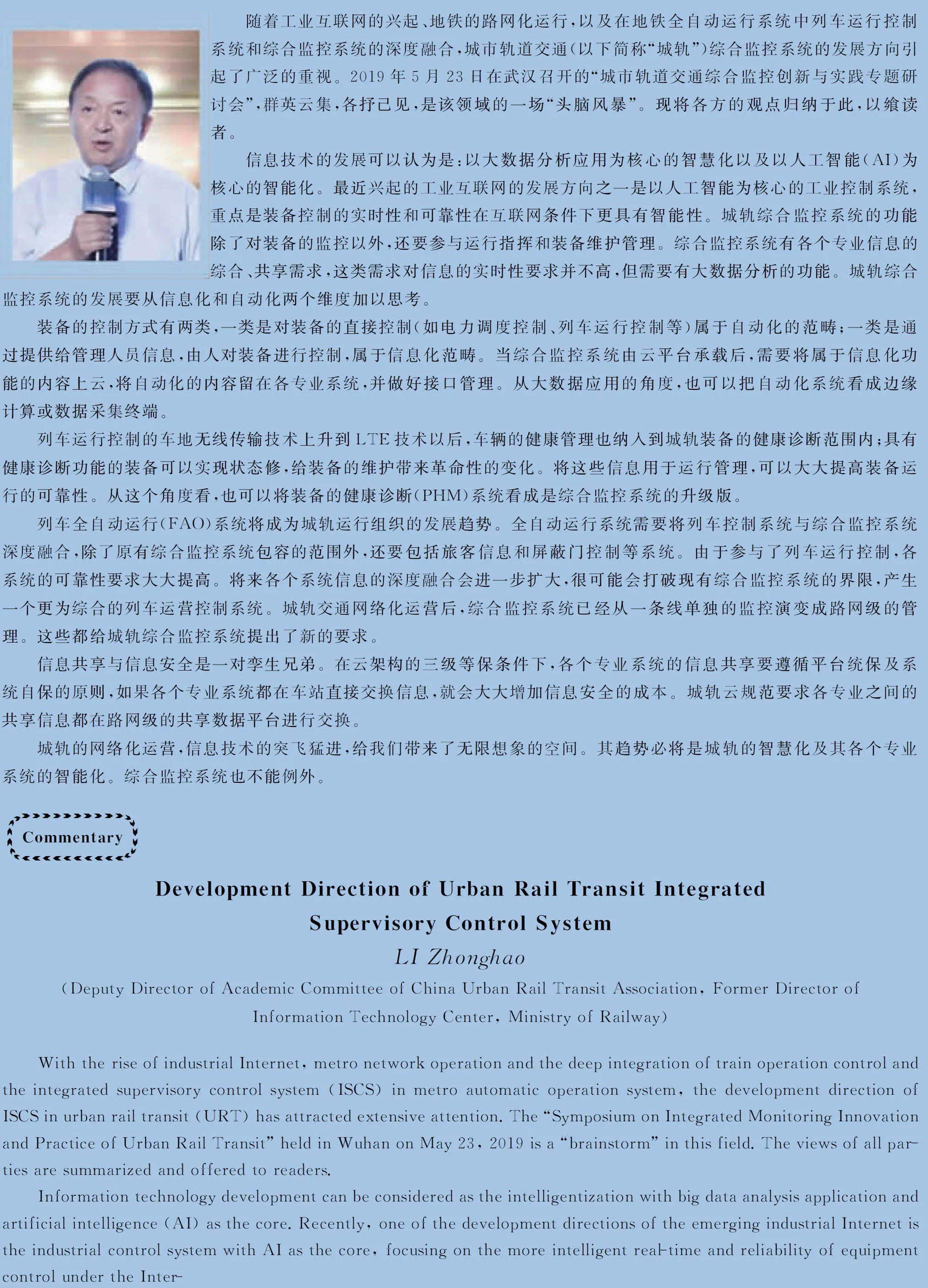城市轨道交通综合监控系统的发展方向
2019-08-19李中浩
李中浩
(中国城市轨道交通协会专家和学术委员会副主任,原铁道部信息技术中心主任)

net conditions. The function of ISCS in URT is not only to monitor the equipment, but also to participate in operation command and equipment maintenance management. ISCS has comprehensive and shared requirements for various kinds of professional information. Th requirements in this field do not require the high-time information, but the function of big data analysis. The development ISCS in URT should be considered from informationization and automation two dimensions.
There are two types of equipment control methods. One is the direct control of equipment (such as power dispatch control, train operation control, etc.) that belongs to the category of automation; the other is the equipment control by providing information to managers, that belongs to informatization category. When ISCS is carried by the cloud platform, it is necessary to integrate the content with the information functions on the cloud, dividing the automated content into each professional system with interface management. From the perspective of big data application, automation systems can also be viewed as the edge computing or data acquisition terminals.
When the track-to-ground wireless transmission technology for train operation control upgrades to LTE, the health management of the vehicle is also included in the health diagnosis of urban rail equipment; since the equipment with health diagnosis function can realize condition-based maintenance, it can revolutionize the maintenance of the equipment. The information used for operational management can improve the reliability of equipment operations. Therefore equipment′s health diagnostic system (PHM) can also be viewed as an upgraded version of ISCS.
The train fully automatic operation (FAO) will become the development trend of URT operation organization. FAO system needs to deeply integrate the train control system with ISCS. In addition to the original scope of containment, it also includes passenger information and screen door control system. The reliability requirements for each system will be greatly improved following the participation in train operation control. In the future, various kinds of system information integration will be expanded, which is likely to break the boundaries of the existing ISCS and produce a more comprehensive train operation control system. Since the beginning of urban rail transit network operation, ISCS has evolved from single line monitoring to network level management. All of these have new requirements for urban rail ISCS.
Information sharing and information security are inseparable. Under the three-level security conditions of the cloud architecture, the information sharing of each professional system should follow the principle of platform security and system self-protection. If each professional system exchanges information directly at the station, the cost of information security will be greatly increased. The cloud specification of urban rail transit requires that shared information between the various disciplines be exchanged at the network-level shared data platform.
The networked operation of urban rail transit and the rapid advancement of information technology have brought us unlimited imagination. The development trend is bound to be the intelligentization of urban rail transit and its various professional systems. ISCS is not exceptional.
(Translated by JIANG Jiacen)
